Discovered Gold Pendant Of Odin And His Horse Sleipnir Might Be Linked To The Heruli Tribe
Ellen Lloyd - AncientPages.com - A gold pendant depicting the Norse God Odin and his horse Sleipnir has been discovered on a farm in Kungsbacka, Sweden. Archaeologists think the precious jewelry can be linked to the Heruli, the Huns and ancient Romans.
The Heruli were an East Germanic tribe that lived near the Sea of Azov, near the Black Sea, in the third century AD, and later moved to the Roman frontier on the central European Danube at the same time as many eastern "barbarians" during late antiquity, such as the Goths, Huns, Scirii, Rugii and Alans.
Albert 21st King of the Heruli.
The precise origins of the Heruli (or Heroli) are unknown. They seem to have borne some relationship with the tribes that formed the Suevi. Ancient inscriptions in Scandinavia which are sometimes attributed to them suggest that this fierce, martial people were called the 'lords'.
In 1867, Swedish farmer Peter Andreasson made a unique find on his land, discovering a pendant from the 500s. Now, archaeologist Bengt Nordqvist and his team have literally struck gold. The gold pendant of Odin riding a horse was found close to the first find.
Odin, who has always been associated with war, healing, royalty, death, knowledge, wisdom, battles, frenzy, magic and runes was the supreme Norse god. He is mentioned in many mythological stories, not only from the Norse, but also Germanic and pagan mythologies.
In myths and legends, it told that he took Sleipnir, his eight-legged horse to the sky or underworld.
Gold pendant of Odin and Slepnir. Image credit: Bengt Nordqvist
Nordqvist says the gold pendant is an exceptional discovery. He estimates that the pendant is from the year 400 A.D.
The pendant was probably a medal or military award that ended up in the ground as a sacrifice, Nordqkvist said.
Yet, it seems somewhat strange to archaeologists that such a valuable pendant would be sacrificed in a remote place like this one.
See also:
Runes: Facts And History About Odin’s Secret Language
Sleipnir: Eight-Legged Horse With Supernatural Strength That Belonged To God Odin
Odin: Norse God Of War And Magic – Most Complex Figure Of The Norse Pantheon
What makes both discoveries very exciting is that the pendants have a runic inscription that links the jewelry to the Heruli, the Huns, and ancient Romans. The inscription reads: “I erilen” and suggests an ancient connection to the Heruli.
“Erils or Heruli, are mentioned in ancient sources as participants in the great wars between the Romans, Huns, and Goths, Nordqvist says. “The Huns came across large amounts of gold and the connection to the ancient scriptures is of course very exciting,” he continues.
The fact that two ancient gold pendants of historical value have already been found in close vicinity, suggests there could be much more out there. Archaeologists will have to examine the area closer and look for more ancient treasures that could cast more light on these discoveries.
Written by Ellen Lloyd – AncientPages.com
Copyright © AncientPages.com & Ellen Lloyd All rights reserved. This material may not be published, broadcast, rewritten or redistributed in whole or part without the express written permission of AncientPages.com and Ellen Lloyd
About the author:
Ellen Lloyd – is the owner of AncientPages.com and an author who has spent decades researching ancient mysteries, myths, legends and sacred texts, but she is also very interested in astronomy, astrobiology and science in general.
More From Ancient Pages
-
 World’s Earliest Evidence Of Food Fermentation Discovered In Southern Sweden
Archaeology | Feb 11, 2016
World’s Earliest Evidence Of Food Fermentation Discovered In Southern Sweden
Archaeology | Feb 11, 2016 -
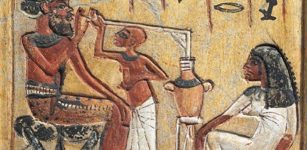 5,000 Years Old Beer Enjoyed By Egyptian Pharaohs Recreated
Archaeology | May 23, 2019
5,000 Years Old Beer Enjoyed By Egyptian Pharaohs Recreated
Archaeology | May 23, 2019 -
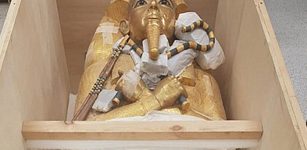 King Tutankhamun’s Large Golden Coffin Was Moved For Restoration
Archaeology | Jul 18, 2019
King Tutankhamun’s Large Golden Coffin Was Moved For Restoration
Archaeology | Jul 18, 2019 -
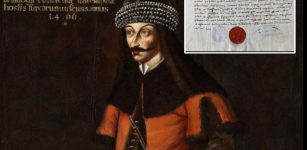 Count Dracula: His Letters Helped Researchers Cast New Light On Health Of Legendary Figure
Historical Figures | Aug 17, 2023
Count Dracula: His Letters Helped Researchers Cast New Light On Health Of Legendary Figure
Historical Figures | Aug 17, 2023 -
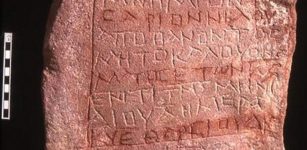 Nabataean Culture Lived On Long After Their Kingdom Disappeared – New Evidence
Archaeology | Feb 27, 2019
Nabataean Culture Lived On Long After Their Kingdom Disappeared – New Evidence
Archaeology | Feb 27, 2019 -
 Remarkable Underground City Of Nushabad: A Masterpiece Of Ancient Architecture
Ancient Technology | Nov 17, 2015
Remarkable Underground City Of Nushabad: A Masterpiece Of Ancient Architecture
Ancient Technology | Nov 17, 2015 -
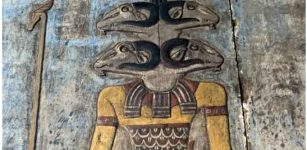 Reliefs And Engravings Of Celestial Bodies And A Zodiac On Walls And Ceilings Of Luxor’s Esna Temple
Archaeology | Oct 5, 2023
Reliefs And Engravings Of Celestial Bodies And A Zodiac On Walls And Ceilings Of Luxor’s Esna Temple
Archaeology | Oct 5, 2023 -
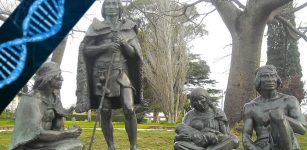 Ancient DNA Sheds Light On ‘Lost’ Indigenous People Of Uruguay And Reveals A Surprising Connection
Archaeology | May 11, 2022
Ancient DNA Sheds Light On ‘Lost’ Indigenous People Of Uruguay And Reveals A Surprising Connection
Archaeology | May 11, 2022 -
 Virtual Nubia: Sudan’s Medieval Monasteries Digitally Reconstructed By Polish Archaeologists
News | Oct 8, 2020
Virtual Nubia: Sudan’s Medieval Monasteries Digitally Reconstructed By Polish Archaeologists
News | Oct 8, 2020 -
 LIDAR Images Reveal Cambodia’s Greater Angkor Region Was Home To 700,000-900,000 People
Archaeology | May 8, 2021
LIDAR Images Reveal Cambodia’s Greater Angkor Region Was Home To 700,000-900,000 People
Archaeology | May 8, 2021 -
 Mysterious Mount Roraima Surrounded By Myths And Clouds Of Dense Fog
Featured Stories | Nov 13, 2018
Mysterious Mount Roraima Surrounded By Myths And Clouds Of Dense Fog
Featured Stories | Nov 13, 2018 -
 On This Day In History: ‘Sea King’ Ragnar Lodbrok Seizes Paris – On March 28, 845
Featured Stories | Mar 28, 2016
On This Day In History: ‘Sea King’ Ragnar Lodbrok Seizes Paris – On March 28, 845
Featured Stories | Mar 28, 2016 -
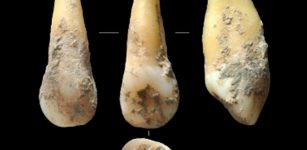 Common genetic origin for farmers from Central Europe and the Mediterranean area
Human Beginnings | Sep 5, 2015
Common genetic origin for farmers from Central Europe and the Mediterranean area
Human Beginnings | Sep 5, 2015 -
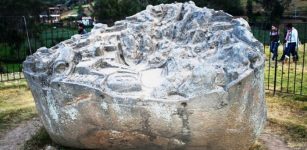 Puzzling Huge Ancient Sayhuite Monolith In Peru Remains An Unsolved Mystery
Civilizations | Jul 23, 2016
Puzzling Huge Ancient Sayhuite Monolith In Peru Remains An Unsolved Mystery
Civilizations | Jul 23, 2016 -
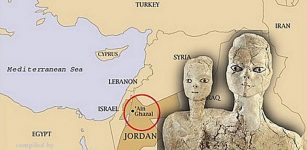 Mysterious Ancient Statues From Jordan With Millennia-Old Secrets
Civilizations | Oct 24, 2018
Mysterious Ancient Statues From Jordan With Millennia-Old Secrets
Civilizations | Oct 24, 2018 -
 Roman Villa Full Of Miniature Votive Axes, Curse Tablets And Strange Artifacts Discovered In Oxfordshire
Archaeology | Apr 3, 2024
Roman Villa Full Of Miniature Votive Axes, Curse Tablets And Strange Artifacts Discovered In Oxfordshire
Archaeology | Apr 3, 2024 -
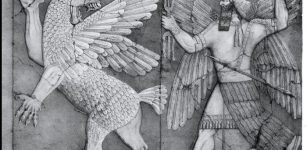 Evil God-Bird Anzu Who Stole The Tablet Of Destiny To Control Universe and Fates Of All
Featured Stories | Aug 8, 2016
Evil God-Bird Anzu Who Stole The Tablet Of Destiny To Control Universe and Fates Of All
Featured Stories | Aug 8, 2016 -
 Are Thunderbird Petroglyphs In Bighorn Basin Linked To Golden Eagle Nests?
Civilizations | Apr 26, 2017
Are Thunderbird Petroglyphs In Bighorn Basin Linked To Golden Eagle Nests?
Civilizations | Apr 26, 2017 -
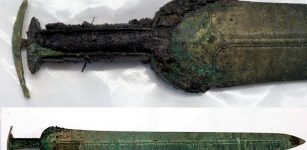 A 1.3 kg Heavy Bronze Sword Unearthed On Funen Island, Denmark
Archaeology | Mar 16, 2021
A 1.3 kg Heavy Bronze Sword Unearthed On Funen Island, Denmark
Archaeology | Mar 16, 2021 -
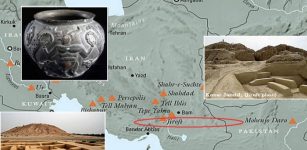 Archaeologists Survey Bronze Age Konar Sandal Site In Southeast Iran
Archaeology | Feb 17, 2021
Archaeologists Survey Bronze Age Konar Sandal Site In Southeast Iran
Archaeology | Feb 17, 2021




